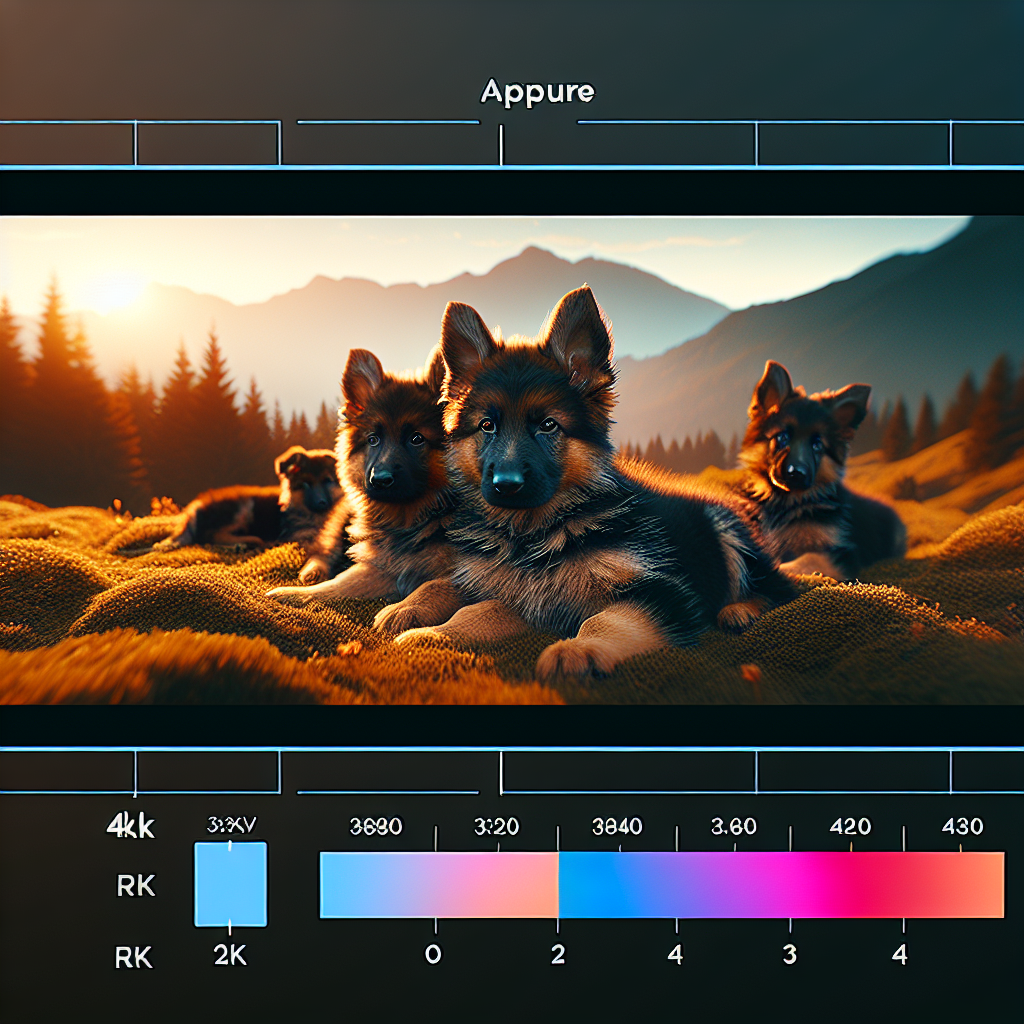50 Surprising Facts About Dogs You Probably Didn’t Know
50 Surprising Facts About Dogs You Probably Didn’t Know

50 Surprising Facts About Dogs You Probably Didn't Know
-
Table of Contents
Introduction
Dogs are fascinating creatures that have been our loyal companions for thousands of years. While we may think we know a lot about them, there are always surprising facts that can leave us amazed. In this article, we will explore 50 surprising facts about dogs that you probably didn’t know. From their incredible sense of smell to their unique sleeping habits, these facts will surely deepen your appreciation for these wonderful animals. So, let’s dive in and discover some intriguing and lesser-known aspects of our furry friends!
Origins and Evolution of Dogs
Dogs have been our loyal companions for thousands of years, but how much do we really know about their origins and evolution? In this article, we will explore 50 surprising facts about dogs that you probably didn’t know. Let’s dive right in!
Did you know that dogs are descendants of wolves? It’s true! Scientists believe that dogs were domesticated from wolves around 15,000 years ago. This process of domestication occurred when wolves started to scavenge near human settlements, eventually leading to a mutually beneficial relationship between humans and dogs.
Interestingly, the first domesticated dogs were likely used for hunting purposes. They helped humans track and catch prey, making them invaluable companions. Over time, dogs evolved to serve various roles, including herding livestock, guarding homes, and even providing emotional support as therapy dogs.
One surprising fact is that dogs come in a wide range of shapes and sizes. From tiny Chihuahuas to massive Great Danes, there is incredible diversity within the dog species. This variation is due to selective breeding, where humans have intentionally bred dogs with specific traits to create new breeds.
Speaking of breeds, did you know that there are over 340 recognized dog breeds worldwide? Each breed has its own unique characteristics, such as coat type, size, and temperament. Some breeds, like the Border Collie, are known for their intelligence and herding abilities, while others, like the Basset Hound, are famous for their exceptional sense of smell.
While dogs have been bred for specific traits, they all share a common ancestor. DNA studies have shown that all dogs belong to the same species, Canis lupus familiaris. This means that regardless of their breed, all dogs are part of the same family.
Another fascinating fact is that dogs have an incredible sense of smell. In fact, their sense of smell is estimated to be 10,000 to 100,000 times more powerful than that of humans. This exceptional olfactory ability has made dogs invaluable in various fields, including search and rescue, bomb detection, and even medical diagnosis.
Dogs have also played a significant role in human history. For example, during World War I, dogs were used as messengers, sentries, and even ambulance dogs. Their loyalty and bravery saved countless lives on the battlefield.
In recent years, scientists have made remarkable discoveries about the genetic makeup of dogs. They have found that dogs share more genetic similarities with humans than any other animal species. This close genetic relationship has allowed researchers to study dogs to gain insights into human diseases and genetics.
As we delve into the origins and evolution of dogs, it becomes clear that these incredible creatures have had a profound impact on our lives. From their humble beginnings as wolves to their diverse breeds and remarkable abilities, dogs continue to captivate and amaze us.
So, the next time you see a dog wagging its tail or performing a clever trick, remember the long journey that has brought them to our homes and hearts. Dogs truly are remarkable creatures, and we are fortunate to have them as our faithful companions.
Unusual Dog Breeds from Around the World
Dogs are known as man’s best friend, and with over 340 different dog breeds in the world, it’s no wonder they come in all shapes, sizes, and colors. While most people are familiar with popular breeds like the Labrador Retriever or the German Shepherd, there are many unusual dog breeds from around the world that you probably didn’t know about. These unique breeds have fascinating histories and characteristics that make them stand out from the crowd.
One such unusual breed is the Xoloitzcuintli, also known as the Mexican Hairless Dog. This ancient breed dates back over 3,000 years and was considered sacred by the Aztecs. They were believed to have healing powers and were often used in religious ceremonies. Despite their lack of fur, Xolos are known for their warm and affectionate nature, making them great companions.
Moving on to Asia, we have the Shar-Pei, a breed known for its wrinkled skin. Originally from China, these dogs were bred for hunting, herding, and guarding. Their loose skin and unique appearance make them instantly recognizable. Despite their fierce appearance, Shar-Peis are actually quite gentle and loyal, making them great family pets.
Heading over to Africa, we have the Basenji, often referred to as the “barkless dog.” This breed is known for its unique vocalization, which sounds more like a yodel or a howl than a traditional bark. Basenjis are also known for their cat-like grooming habits, as they are meticulous about keeping themselves clean. These small, energetic dogs are great for active individuals or families.
In South America, we have the Peruvian Inca Orchid, another hairless breed. These dogs were highly valued by the Inca civilization and were often kept as pets by nobles. Despite their lack of fur, they are known for their agility and speed. Peruvian Inca Orchids are also known for their calm and gentle nature, making them great therapy dogs.
Moving on to Europe, we have the Bergamasco, a breed known for its unique coat. These dogs have long, matted dreadlocks that give them a distinctive appearance. Originally bred for herding sheep in the Italian Alps, Bergamascos are intelligent and loyal. Their unique coat requires regular maintenance to prevent matting, but their friendly and affectionate nature makes it all worth it.
Heading over to Australia, we have the Australian Silky Terrier, a small breed known for its luxurious, silky coat. These dogs were originally bred to hunt small game and vermin. Despite their small size, Australian Silky Terriers are energetic and fearless. They are also known for their intelligence and trainability, making them great companions for active individuals.
Finally, we have the New Guinea Singing Dog, a breed native to the island of New Guinea. These dogs are known for their unique vocalizations, which sound like a mix between a howl and a song. They are highly adaptable and have a strong prey drive, making them excellent hunters. New Guinea Singing Dogs are also known for their independence and intelligence.
These are just a few examples of the many unusual dog breeds from around the world. Each breed has its own unique characteristics and history, making them fascinating to learn about. Whether you’re a dog lover or simply interested in learning about different cultures, exploring these unusual breeds is sure to be an enlightening experience. So next time you come across a dog you’ve never seen before, take a moment to appreciate the diversity and beauty of our four-legged friends.
Fascinating Dog Behavior and Communication
Dogs are fascinating creatures with a wide range of behaviors and ways of communicating. While we may think we know everything there is to know about our furry friends, there are always surprising facts that can leave us in awe. In this section, we will explore some of the most fascinating dog behaviors and communication methods that you probably didn’t know about.
1. Did you know that dogs have a sense of time? They can actually tell how long you’ve been gone based on the scent you leave behind.
2. Dogs communicate through a variety of ways, including body language, vocalizations, and even facial expressions. They can convey their emotions and intentions through these signals.
3. Have you ever noticed your dog tilting their head when you speak to them? This adorable behavior actually helps them better understand and locate the source of the sound.
4. Dogs have a remarkable ability to understand human gestures. They can follow pointing gestures and even interpret our facial expressions to determine our mood.
5. Dogs are highly social animals and have a complex social structure within their packs. They use body language and vocalizations to establish dominance and maintain order.
6. Have you ever wondered why dogs sniff each other’s behinds? This behavior is actually a way for them to gather information about each other, including their health, diet, and even mood.
7. Dogs have an incredible sense of smell, which is thousands of times more powerful than that of humans. They can detect certain diseases, locate missing persons, and even sniff out drugs or explosives.
8. Dogs use their tails as a form of communication. A wagging tail doesn’t always mean they’re happy; it can also indicate fear, aggression, or uncertainty.
9. Dogs have a unique way of showing affection called “licking.” Licking is not only a sign of love and affection but also a way for dogs to groom themselves and their pack members.
10. Dogs have a natural instinct to dig. This behavior is rooted in their ancestry as hunters and burrowers. They may dig to find prey, create a den, or simply out of boredom.
11. Dogs have a strong sense of loyalty and will often form deep bonds with their human companions. They can sense when we’re sad or upset and will offer comfort and support.
12. Dogs have a keen sense of hearing and can detect sounds that are beyond our range. They can hear frequencies up to 65,000 Hz, while humans can only hear up to 20,000 Hz.
13. Dogs have a unique way of marking their territory called “scent marking.” They use urine and feces to leave their scent and communicate with other dogs in the area.
14. Dogs have a natural instinct to chase moving objects, such as balls or frisbees. This behavior is a result of their hunting instincts and can be a fun way to engage and exercise them.
15. Dogs have a remarkable ability to learn and understand human language. They can learn hundreds of words and commands and can even understand the meaning behind certain phrases.
These are just a few of the many fascinating behaviors and communication methods that dogs possess. They truly are incredible creatures that never cease to amaze us with their intelligence and unique abilities. So the next time you interact with your furry friend, take a moment to appreciate their remarkable behaviors and the special bond you share.
Surprising Health Benefits of Owning a Dog
Dogs are more than just our furry companions; they can also have a positive impact on our health. Owning a dog comes with a myriad of surprising health benefits that you probably didn’t know about. So, if you’re a dog lover or considering getting a dog, here are some surprising facts about the health benefits of owning a dog.
Firstly, owning a dog can help lower your blood pressure. Studies have shown that spending just a few minutes petting a dog can reduce blood pressure levels. This is because interacting with dogs releases oxytocin, a hormone that helps lower stress and anxiety.
In addition to lowering blood pressure, owning a dog can also help reduce the risk of heart disease. Research has found that dog owners have a lower risk of developing cardiovascular diseases, including heart attacks and strokes. This could be due to the fact that owning a dog encourages physical activity, as dogs need regular exercise.
Speaking of exercise, owning a dog can also help you stay fit and active. Dogs need daily walks, which means you’ll be more likely to get out and move around. Whether it’s a leisurely stroll or a brisk jog, having a dog can motivate you to stay active and maintain a healthy lifestyle.
Furthermore, owning a dog can boost your immune system. Studies have shown that children who grow up with dogs have a lower risk of developing allergies and asthma. This is because dogs introduce a variety of bacteria and allergens into the home, which helps strengthen the immune system and reduce the risk of allergies.
Another surprising health benefit of owning a dog is improved mental health. Dogs are known to be great companions and can provide emotional support. They can help reduce feelings of loneliness and depression, and even improve symptoms of anxiety and PTSD. The unconditional love and companionship that dogs offer can have a profound impact on our mental well-being.
Moreover, owning a dog can also help improve social connections. Walking your dog in the park or taking them to obedience classes can provide opportunities to meet new people and make friends. Dogs are great conversation starters and can help break the ice in social situations.
Additionally, owning a dog can help reduce stress levels. Interacting with dogs has been shown to increase levels of serotonin and dopamine, neurotransmitters that help regulate mood and reduce stress. Simply spending time with your dog can help you relax and unwind after a long day.
Lastly, owning a dog can improve your overall quality of life. Dogs provide companionship, love, and a sense of purpose. They can help reduce feelings of loneliness and provide a source of joy and happiness. The bond between a dog and their owner is truly special and can bring immense joy and fulfillment to our lives.
In conclusion, owning a dog comes with a multitude of surprising health benefits. From lowering blood pressure and reducing the risk of heart disease to improving mental health and reducing stress, dogs have a positive impact on our well-being. So, if you’re looking for a furry friend, consider adopting a dog and experience the many health benefits they bring.
Lesser-Known Facts About Famous Dogs in History
Dogs have been our loyal companions for thousands of years, but did you know that some of them have achieved fame and left a lasting impact on history? In this section, we will explore some lesser-known facts about famous dogs in history that will surely surprise you.
1. Let’s start with Hachiko, the Akita dog from Japan. Hachiko became famous for his unwavering loyalty to his owner. Even after his owner’s death, Hachiko continued to wait for him at the train station every day for nearly 10 years.
2. Another famous dog is Laika, the first living creature to orbit the Earth. Laika was a stray dog from Moscow who was chosen to be part of the Soviet Union’s space program. Unfortunately, she did not survive the mission, but her bravery paved the way for future space exploration.
3. Moving on to more recent history, we have Sergeant Stubby, a pit bull terrier who served as a mascot during World War I. Stubby was not only a morale booster for the soldiers but also proved to be a valuable asset on the battlefield. He could detect gas attacks, locate wounded soldiers, and even catch German spies.
4. Have you ever heard of Balto? He was a Siberian Husky who led a team of sled dogs in the 1925 serum run to Nome, Alaska. Balto and his team braved harsh weather conditions to deliver life-saving medicine to the town, saving countless lives.
5. Now let’s talk about Bobbie the Wonder Dog. In 1923, Bobbie was accidentally left behind by his owners during a family vacation in Indiana. Remarkably, he managed to find his way back home to Oregon, covering a distance of over 2,500 miles in just six months.
6. Moving on to the world of entertainment, we have Rin Tin Tin, a German Shepherd who became a Hollywood star in the 1920s. Rin Tin Tin appeared in numerous films and even had his own radio show. He is often credited with popularizing the breed and inspiring many people to adopt German Shepherds.
7. Did you know that the famous detective Sherlock Holmes had a loyal companion named Toby? Toby was a bloodhound who helped Holmes solve many cases by tracking scents and finding crucial evidence. He was known for his exceptional sense of smell and unwavering dedication to his master.
8. Let’s not forget about Lassie, the beloved Rough Collie who starred in movies and a long-running television series. Lassie’s intelligence and bravery made her a symbol of loyalty and heroism, and she remains one of the most iconic dogs in pop culture.
9. Lastly, we have Smoky, a Yorkshire Terrier who served as a therapy dog during World War II. Smoky accompanied her owner, Corporal William Wynne, in the Pacific Theater and provided comfort to wounded soldiers. She even survived a typhoon and numerous air raids.
These are just a few examples of the many famous dogs who have left their paw prints on history. Their stories remind us of the incredible bond between humans and dogs and the remarkable things that can be achieved when we work together. So, the next time you see a dog, remember that behind those wagging tails and wet noses, there may be a story waiting to be discovered.
Conclusion
In conclusion, dogs are fascinating creatures with many surprising facts that may not be commonly known. From their exceptional sense of smell to their ability to understand human emotions, dogs continue to amaze us. Whether it’s their unique sleeping positions or their impressive athletic abilities, there is always something new to learn about these beloved companions. So, next time you interact with a dog, remember that there is much more to them than meets the eye.





